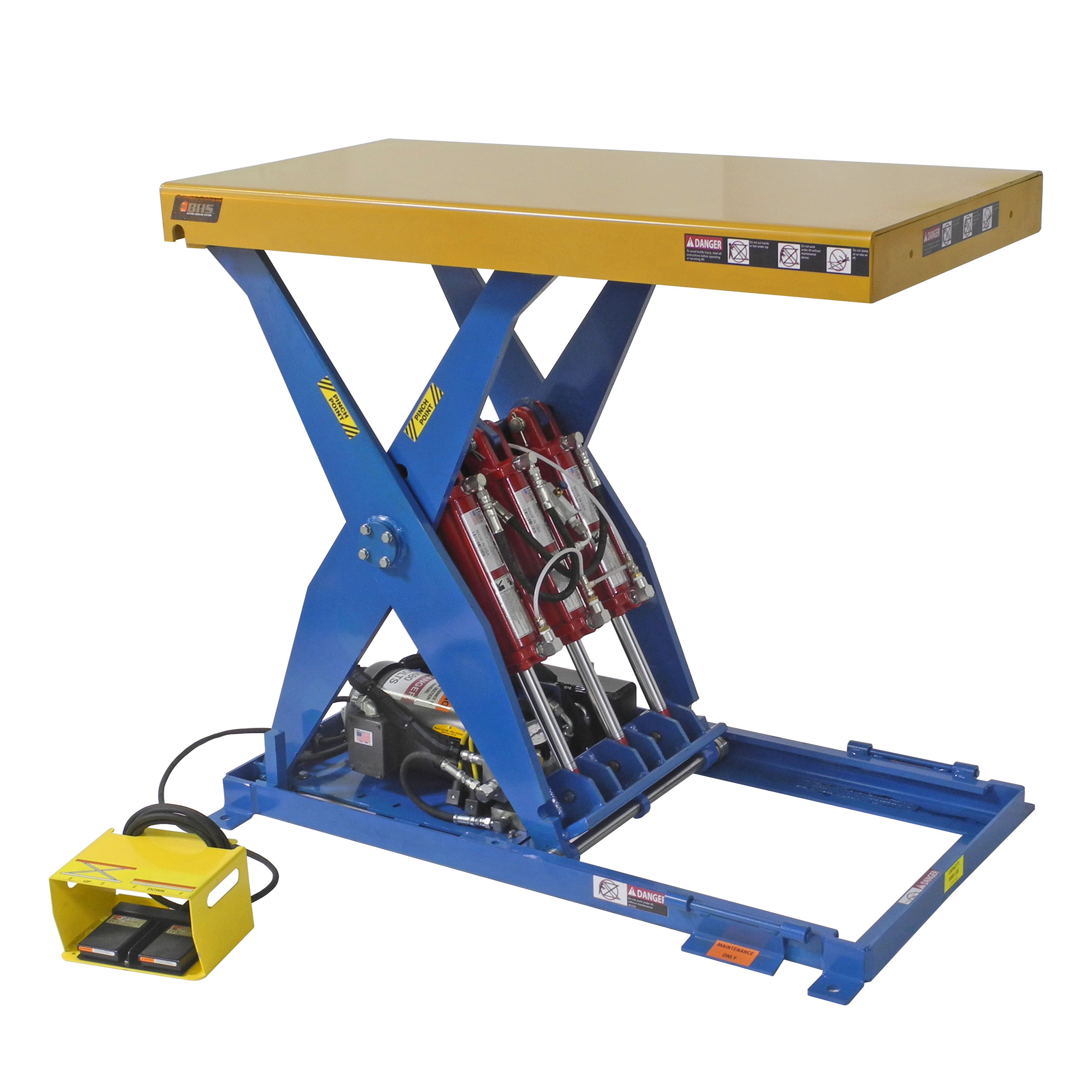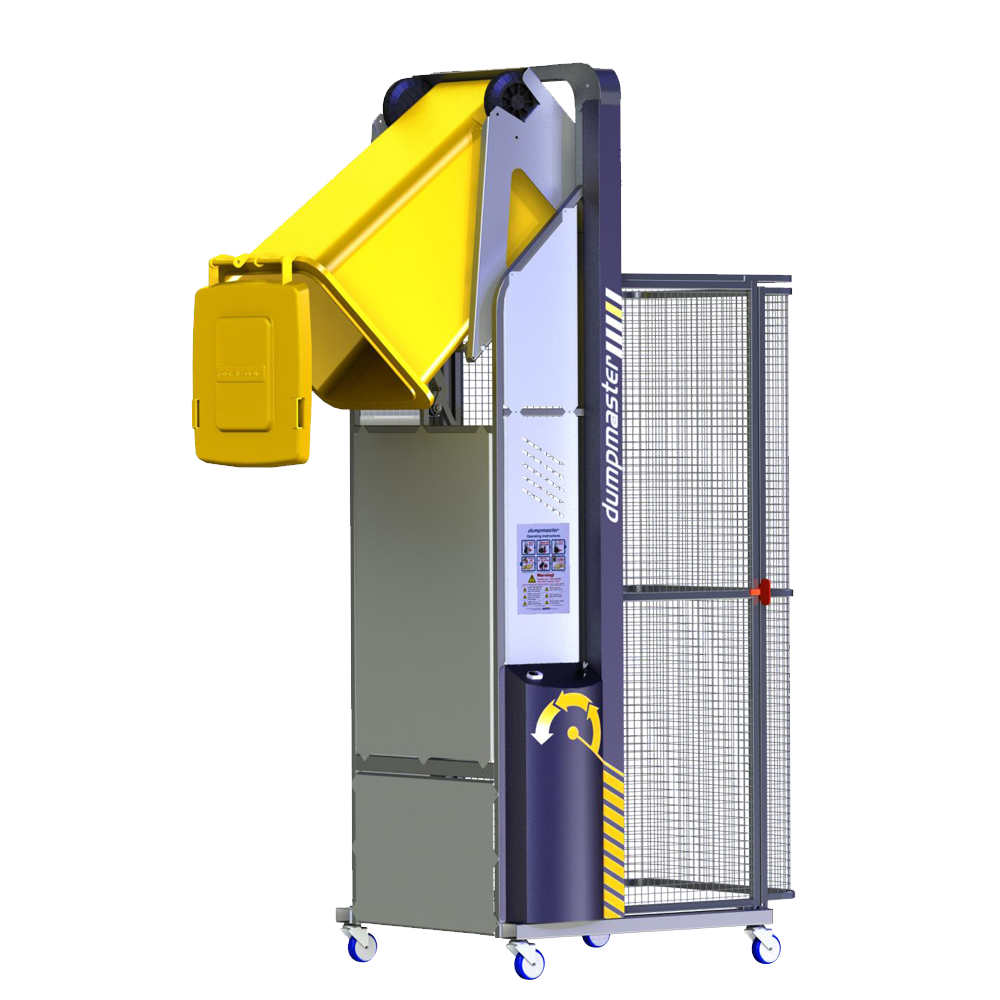We use cookies to make your experience better. To comply with the new e-Privacy directive, we need to ask for your consent to set the cookies. Learn more.
Using the 10 Principles of Material Handling in the Warehouse
If the work of a warehouse or distribution center can be boiled down to one activity, it is material handling. After all, getting products or materials or components or whatever they may be from the point of origin to its final destination is what the logistics industry is all about. Handling, packaging, transportation, and data tracking are all essential tasks, and they all require highly specialized equipment.
Luckily, the warehousing industry doesn't have to start from scratch each time. Industrial engineers have been studying material handling since the Industrial Revolution. The Material Handling Institute, the largest association for supply chain industries in the United States, distilled the insights of professionals and researchers down into a document they call "The 10 Principles of Material Handling."
Each of these guidelines can play some role in the operation of every warehouse and distribution center. Together, they form a step-by-step guide for creating a leaner, safer, more-productive material handling system, from equipment to labor.
Here's a warehouse-centered description of all 10 of these principles, along with a few ways managers can implement them to improve overall operation:
-
The First Principle: Start with a Plan
The "Planning Principle" is the only place to start. Rather than tackling each material handling challenge as it occurs, this principle states, all material handling must be part of an organized system.
The material handling plan for a given application describes the material (what's being moved), and when, where, and how often these moves must occur. The "method" applied to each of these moves describes who completes the work and how they do so.
-
The Second Principle: Standardize All Parts of the Material Handling System
The goal is to create a smooth, seamless system, with as little variance in material-handling approaches as possible. This is reflected in the "Standardization Principle," which calls for standard equipment, methods of material handling, control design, and even software systems to achieve greater predictability and lower costs over time.
However, there is one important caveat: standardization must be balanced with flexibility and modular system design. So while it's important to make sure that cartons are standard sizes, so far as is possible, engineers must also try to anticipate future changes and choose equipment that's flexible enough to meet the needs of tomorrow.
-
The Third Principle: Reduce Work as Much as Possible
The simplest way to improve safety and productivity in material handling tasks is to engineer those tasks out of the system entirely. That's why the "Work Principle" asks designers to simply create systems that don't require as much material handling work in the first place.
In this context, the term "work" has a very specific definition. It is the "material handling flow" (itself defined as the "volume, weight, or count” per unit of time) times the distance this "volume, weight, or count" must move. Note that even simple acts such as lifting or setting down a load is considered a discrete move, and must be factored into the distance figure.
In short, the Work Principle asks designers to minimize material handling entirely. This will affect the placement of machinery, operation sequences, and equipment choices, with the goal of limiting movement of materials as much as possible.
-
The Fourth Principle: Invest in Ergonomics
The "Work Principle" gives way to a broader safety ground rule in the "Ergonomics Principle." As we've discussed before, "ergonomics" is defined as "matching the work to the worker." This means managers must consider the natural limitations of the human mind and body within the context of given workplace tasks.
In order to keep workers safe and productive, employers should provide ergonomic equipment to prevent repetitive or strenuous tasks. For instance, installing Lift Tables or Tilt Tables to position work within a comfortable range of motion can prevent the development of musculoskeletal disorders for workers.

Figure 1. Lift Tables vertically position materials at comfortable heights for improved ergonomics and productivity.
-
The Fifth Principle: Match Unit Loads to Capability
The concept of the "unit load" is crucial to understanding broader material handling strategies. So what is a unit load? It's essentially any consolidated bundle of individual units that can be treated as a whole and complete unit in itself. For instance, a full pallet-load, a carton, or even a tote bag might make up the broader unit load.
The "Unit Load Principle" recommends planning unit loads, in terms of size and configuration, such that they contribute to efficient workflow throughout the process.
-
The Sixth Principle: Use Space Efficiently
As we've written on this blog, the utilization of vertical space is a key consideration for the truly productive warehouse. This is reflected in MHI's sixth principle, the "Space Utilization Principle."
This rule holds simply that designers must take "effective and efficient" advantage of all the space at their disposal, in all three dimensions. That means eliminated clutter, clearing aisles, and finding a balance between accessibility and storage density.
-
The Seventh Principle: Integrate All Systems Effectively
Here's where the plan you made according to the First Principle pays off. A material handling system covers every element of the supply chain, from source to shipping to returns via reverse logistics. Every element of the system should be integrated carefully to reduce inventory levels to as exact a match to the customer's need as possible.
In order for this system to work, warehouses and distribution centers must include robust tracking mechanisms to allow identification of materials and products at a glance.
-
The Eighth Principle: Mechanize and Automate When Possible
The "Automation Principle" relies on the fact that, when workers don't have to manually handle their materials, you can create a safer, more efficient workplace. This is another area in which mechanical material handling equipment is key.
For instance, many material handling applications don't have adequate equipment for simultaneously lifting and emptying bulk containers. Introduce Bin Tippers in these instances to prevent the musculoskeletal injuries associated with manually lifting and emptying boxes, bins, and bags. 
Figure 2. Bin Tippers are great for emptying heavy bins and drums at different heights.
-
The Ninth Principle: Implement Green Practices
Staff aren't the only ones warehouse engineers have to watch out for. The Material Handling Institute's "Environmental Principle" asks system planners to consider environmental impacts, with the goal of reducing energy usage, limiting waste, and choosing material handling equipment that doesn't produce greenhouse gasses.
Electric forklifts, for instance, are an emissions-free alternative to traditional gas or liquid-propane powered trucks. Further increase efficiency by installing a Forklift Battery Room that cuts change-outs and maintenance down to the bare minimum.
-
The Tenth Principle: Consider the Entire Working Life of Equipment and Systems
When planning the material handling system of a new (or redesigned) distribution center, you can't estimate the real cost of equipment unless you consider the entire life cycle costs. This figure includes the entire price of equipment from the moment it's purchased to the date it must be replaced, which might be decades in the future.
Consider the costs of maintenance, repair, and upkeep through the years to figure out how much you'll really spend on a given piece of material handling equipment. You can keep these figures lower by choosing powerful, long-lasting equipment. When possible, choose gear with solid steel construction and a durable powder coating to resist corrosion, chemical damage, and surface scratches.
Material Handling Equipment and the 10 Principles
In order to fully implement these ideas, and to build a workable material handling system, you need equipment that's built precisely to handle individual tasks within your operation. It follows that this equipment will be highly tailored for the inventory that a given warehouse or DC handles on a daily basis.
For instance, if your operation provides electrical materials for large-scale homebuilders, you could satisfy the third, fourth, sixth, ninth, and tenth principles by adding a Parallel Reel Payout to simplify handling of electrical cable. If, however, you operate a compressed gas distribution center, you'll need Cylinder Transporter carts and Cylinder Storage Cages.
For applications in which the unit load (see Principle #5) is a pallet, which is quite common, employers can implement the Ergonomics Principle (#4) by providing a Pallet Carousel & Skid Positioner. This self-leveling industrial table includes a turntable surface, allowing staff to easily build or unload pallets without stretching, reaching, or bending. This makes the process of handling unit loads much safer and more efficient.
Of course, we can't cover every contingency in these few words. To really decide which material handling equipment will provide the greatest benefits in your unique application, remember to start with the First Principle: Make a plan. When you build a material handling system specifically to match the resources, processes, and predicted flow at your operation, you can build a much leaner, more efficient, and therefore more profitable business.
References:
"The 10 Principles of Material Handling." MHI. Material Handling Institute, n.d. PDF. 6 Oct. 2017.
"Material Handling." MHI. Material Handling Institute, n.d. Web. 6 Oct 2017.

